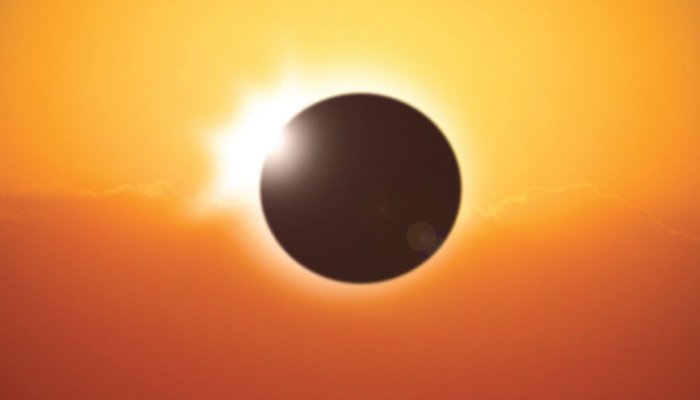
Muscat: An annular solar eclipse is expected to occur on June 10, and although it isn’t visible from Oman, many astronomical sites are setting up live streams so people around the globe can enjoy the spectacle.
Timeanddate.com will be organising a livestream of the eclipse, which will be visible to many countries in the northernmost parts of the world. It begins at 7:45 am UTC (11:45 am GST), and ends at 1:15 pm (5:15 pm GST) later that day.
An annular eclipse occurs when the moon passes between the Earth and the Sun. An annular eclipse occurs over those countries where the moon completely blocks out most of the sun, leaving only its circumference visible, leading to the popular ring-of-fire phenomenon.
While the complete shadow of the moon – called the umbra – falls over these countries, others experience a partial eclipse, with only a partial shadow, or penumbra, falling over them.
“During an eclipse, two shadows are cast,” according to NASA.
“The first is called the umbra. This shadow gets smaller as it goes away from the sun. It is the dark center of the eclipse shadow. The second shadow is called the penumbra. The penumbra gets larger as it goes away from the sun.”
People in parts of Canada, Greenland, and Russia will be able to enjoy the annular eclipse. Those in other parts of the Northern Hemisphere – the US, St Pierre and Miquelon, Iceland, Bermuda, Norway, Sweden, Finland, China, and Mongolia – will get to witness a partial solar eclipse.
“Viewers in Canada’s north will be treated to a spectacular sight–an annual solar eclipse,” said an explainer from the University of Toronto. “This once-in-a-lifetime event will provide viewers in Northern Ontario, Northern Quebec, and Nunavut with a chance to see the sun become a ‘ring of fire’ as the Moon passes in front of it.
“For those outside the path of annularity, the eclipse will still be visible as a partial solar eclipse across most of Canada, although you’ll have to set your alarm if you want to see it–it’ll be in progress as the Sun rises,” added the university. Should you find yourself in an area where you are able to personally view the eclipse, please do not view it with the naked eye. Doing so can cause blindness, as well as a host of other sometimes irreversible problems.
“You should never look directly at the sun without appropriate safety equipment, even during an eclipse,” said the University of Toronto. “However, with a certified eclipse viewer, it’s safe to look at a solar eclipse for a few minutes at a time.
“Certified eclipse viewers work by blocking almost all of the light from the sun, allowing only a tiny, safe amount through,” they added. “Never use binoculars, a telescope, a camera, or welder’s glass to look at a solar eclipse. Do not combine eclipse viewers with any other equipment. You can damage your camera – or your eyes!”